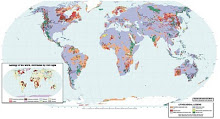J Nutr. 2007 Dec;137(12):2798-804.
Vahter ME.
Institute of Environmental Medicine, Karolinska Institutet, 171 77 Stockholm, Sweden. marie.vahter@ki.se
Abstract
Exposure to arsenic through drinking water is a major public health problem affecting most countries, although the situation is particularly severe in low-income nations. The health consequences of chronic arsenic exposure include increased risk for various forms of cancer and numerous noncancer effects, including diabetes, skin diseases, chronic cough, and toxic effects on liver, kidney, cardiovascular system, and peripheral and central nervous systems. In recent years increasing reports of effects on fetal and child development have appeared. There seems to be a wide variation in susceptibility to arsenic toxicity, which is likely to be related to factors such as variation in arsenic metabolism, nutrition, host-related defense mechanisms, and genetic predisposition. The main mechanisms of arsenic-nutrition interactions include arsenic-induced oxidative stress, which requires nutrient-dependent defense systems, and arsenic metabolism (methylation) via 1-carbon metabolism, which requires methyl groups, folic acid, vitamin B-12, and betaine for the remethylation of homocysteine to methionine. An efficient first methylation step in combination with a slow second methylation step seems to be most critical from a toxicological point of view. A third mode of arsenic-nutrition interaction involves epigenetic effects and fetal programming via DNA methylation.
Thursday, February 17, 2011
Subscribe to:
Post Comments (Atom)




No comments:
Post a Comment